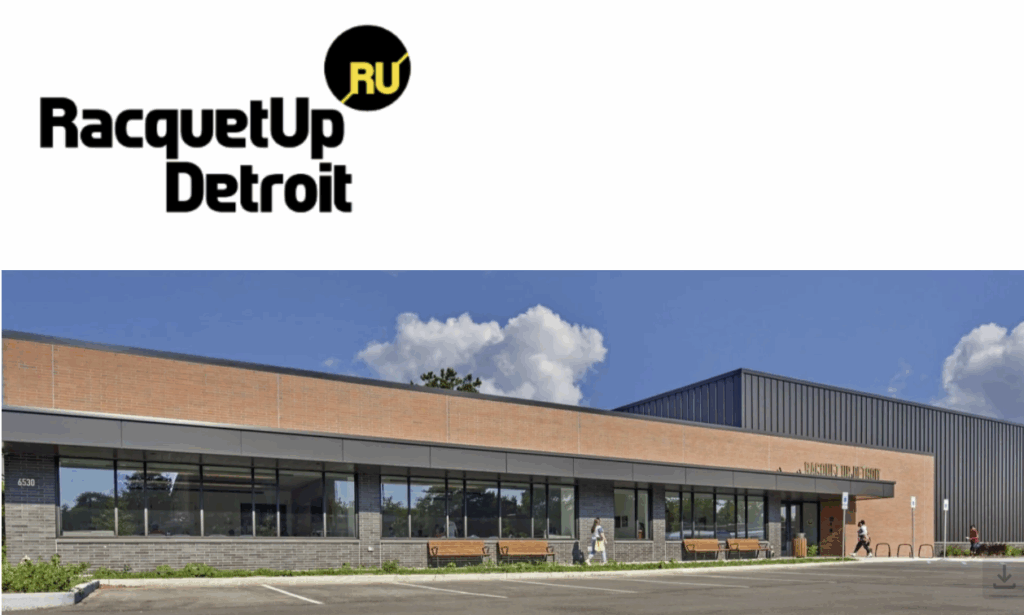A Look at Modern Focus Group Techniques and Best Practices — Even for B2B Brands!
By Chelsea May
The art and science of conducting focus groups — once considered market research’s most valuable and insightful format for canvassing consumer opinions — has not gone the way of the dodo, as too many presume. On the contrary, modern technology has conspired with tried-and-true best practices to make “focus groups” more powerful and more effective than ever.
But these are not your grandfather’s focus groups.
With greater access to human inputs comes a greater ability to gather authentic and impactful insights via deeply immersive conversations using both real-time and asynchronous methodologies. What’s even more exciting is how these modern tools bring what was previously thought to be the purview of consumer brands to business-to-business companies as well.
More Than a Simple Taste Test
When many think of traditional focus groups, what’s typically called to mind are the taste tests we’ve seen on TV (or even participated in). A group of respondents is ushered into a focus group facility, presented a selection of products to taste or test, and asked to provide their preferences and feedback, while a research team watches from behind a two-way mirror.
While those types of focus groups are still being conducted — though, not nearly with the frequency they once were — what we are doing these days is much more immersive, goes into far greater depth, and yields much more intelligence than mere customer preferences. What we seek to uncover is the why behind the whats (opinions) that are being expressed. And to get to the true heart of the matter, there often is no substitute for moderated conversations in small, intimate settings.
This is where focus groups come into play: qualitative research moderated by an expert who can read beyond superficial responses, probe for deeper expressions of motivators and preferences, and read-and-react in real time, yielding a dynamic discussion that can evolve fluidly and in often-unpredictable ways.
Focus groups often provide insights that static, quantitative research instruments are less-equipped to uncover. Whether it is a consumer product or a business-to-business product or service, what’s often needed is to bring human opinions, emotions and unexpressed decision motivators into keen focus. In other words, to conduct a modern focus group.
Three Types of Focus Groups
There are three broad categories of focus groups to consider in the modern paradigm. Some of these can be combined, in part or in whole, depending on the nature of the study and the outcomes sought.
- In-Person Focus Group: This is closest to the concept of the traditional focus groups we often call to mind: small, manageable pools of respondents (typically five to ten people) are invited in to participate in a discussion, facilitated by an expert focus group moderator who is trained and experienced in the art and science of moderating panels to glean specific sets of predetermined insights.
- Virtual Focus Group: This is the online counterpart to the traditional, in-person focus group. Conducted remotely via Web meeting of some kind (Zoom, Teams, or through a proprietary portal), this type of focus group is virtually identical to in-person focus groups, but uses modern Web-casting technology that practically the entire world adopted overnight during the pandemic. While online focus groups bring the obvious limitation of not having everyone together in one room, in which a moderator has complete view of body language and respondents can more easily interact, there are positive tradeoffs that make this type of focus group attractive. Not only does this methodology unbound a research project from the limitations of geography, it also allows client representatives to view the groups in person without the hassle of traveling to a focus group facility (by attending the session or watching a recording later).
- Asynchronous Focus Group: Increasing in popularity, what might be described as an “online bulletin board” is a methodology that offers a positive tradeoff to the limitations that come with scheduling and the availability of respondents for either traditional or online focus groups. In this type of research, customer inputs are gathered over a set period of time, with a predetermined list of questions. Respondents can log in whenever is convenient for them, answer the questions, and respond to other respondents’ comments and inputs. (They may even be able to return to the forum later to offer additional comments or responses to other’s comments.) Think of an online forum or social media post/group, and you have a fairly good sense of what these look like.
While this asynchronous technique eliminates both geographic and scheduling barriers, it must be conceded that this type of research may not be as immersive and exhaustive as one conducted in real time, moderated by an expert, and with respondent-to-respondent discussion, reactions and interactions. However, this methodology allows us to capture insights from a large group of respondents (often 30 to 40 people) and the insights generated provide a depth of knowledge across a wide range of topics.
No matter which form of focus group a client is considering, there are best practices that separate an exceptionally performed focus group from those that might leave deeper (or unexpressed) insights in the room…instead of captured for analysis.
Best Practices for Conducting Focus Groups of All Formats
Keep in mind, modern focus groups are about much more than just asking for customer preferences, as in the old days: Do you prefer Product X or Product Y? On the contrary, what market researchers want to glean today are data-rich insights…and insight-rich data.
Make sure any focus group you may be considering adheres to best practices followed by professionals who conduct these research initiatives with frequency and with demonstrated success in gaining a deep understanding of a customer’s complete range of purchase considerations.
Recruiting is Critical.
Recruiting relevant respondents is an arduous undertaking, but one that is critical to the quality of the insights gathered. This is especially true in the business-to-business sector, as it’s often not just customers and potential customers we want to hear from — it might be anyone up and down the value chain of a given market sector: suppliers, distributors, retailers, service technicians, etc. These experts can be difficult to locate and even harder to recruit, but they are imperative to canvas. We insist on making the extra effort to source them using our long-standing methodologies. We canvas a wide range of sources, including LinkedIn, expert networks, referrals, Martec databases, client contacts/customers and many others to ensure the appropriate mix of respondents. In addition, we employ strict and robust screening criteria to maximize the quality of respondents.
Put People at Ease.
It is typical for respondents to enter into a focus group with their guardrails up. Until those are lowered, researchers will not gain full access to the range of emotions and intellectual drivers of participants’ opinions. There are proven pathways to putting people in the appropriate frame of mind before true insights can be expressed and probed. Our moderators have various warm up exercises that the moderator takes a panel through before approaching the core research questions. Those questions are the most important part of the research, but if you don’t “warm up” the room before you get to them, you risk getting partial answers and somewhat withheld opinions.
Consider a Change of Venue.
Another way researchers and brands are working to make respondents more comfortable is to move the panels outside of the traditional focus group facility and into a less-foreboding conference room environment. Without the intimidating presence of the two-way glass (and the knowledge that “someone is watching,”) a change of venue can make the discussion feel more comfortable and less sterile. A properly administered focus group study most often ends up being both…more comfortable for everyone and much less sterilized by inhibition.
Keep Close Track of Time.
Expert moderators master the art of time management. One can’t let a “rabbit-hole” discussion drag on too early in the panel conversation that forces the moderator to speed through a set of questions at the end of the discussion guide. When these question sets are designed, they presume ample and equal time and focus will be spent on the most relevant points of discussion. This is a skill that must be honed and developed…ideally, mastered.
Don’t Rob Peter to Pay Paul.
In almost every focus group, there’s a dominant personality who, left unchecked, will monopolize the share of the air time; and there is always the underspoken introvert who is perfectly content to sit quietly while others lead the conversation. But everyone’s input is equally valuable. So the moderator must be purposeful about moderating the over-sharer and prompting the quiet types among the group. We strive to attain first-name familiarity with respondents early in the session. Not only does this build rapport and lower barriers, such first-name familiarity offers a bit of leeway when it’s time for the moderator to step in and interrupt the over-sharer: “These are great points, Paul. You know what, we haven’t heard from Peter in a while. Peter, what do you think — agree or disagree?”.
Time Travel, If You Can.
Recruiting respondents can often be limited by both geography and the challenge to synchronously align busy peoples’ schedules . Getting a suitable group of B2B professionals in one room at a specific time can be a rigorous undertaking. But what if you go to where the opinions already are?
One technique we use is to travel to trade shows, conventions and conferences that a target pool of respondents is already attending, and conduct the focus groups there. This removes geographic barriers, greatly moderates scheduling difficulties, and provides access to a target-rich pool of recruits who will already be in the proper state of mind to evaluate new product innovations in the context of industry trends and their own shifting customer dynamics (likely being addressed in some way at the conference).
Six Dimensions of Focus Groups (Versus Only Two)
Focus groups are not a thing of the past. Far from it. Compared to quantitative surveys, they offer the opportunity to mine deeper for deeply held opinions and inputs. Whereas a survey may be able to ask what opinion a respondent has, and perhaps offer an open-ended dialogue box to provide a little context as to why, a focus group allows researchers to probe the full range of important inputs: what, why, when, where, how, who…then ask again: why, why not, tell me more, who else agrees or disagrees, etc…
Conducting these studies with groups of people together also provides an additional layer of interactivity and continued discussion that isn’t possible in a survey or even a one-to-one qualitative interview.
In short: Don’t lose sight of focus groups in the modern day and age. They may not be your grandfather’s focus groups anymore, but they almost certainly have hidden wisdom and competitive advantage to leverage.





